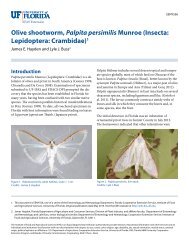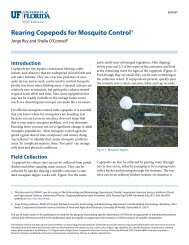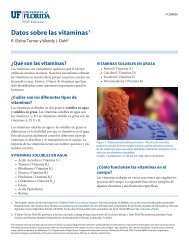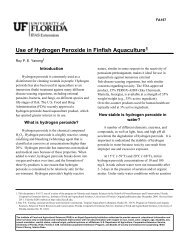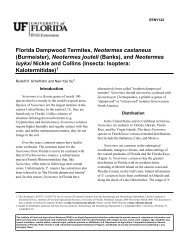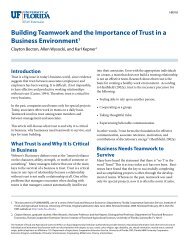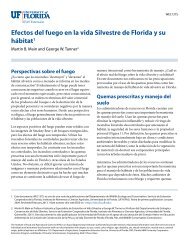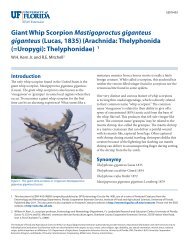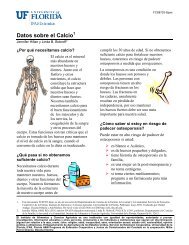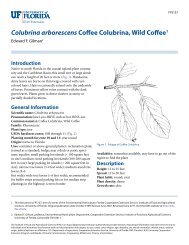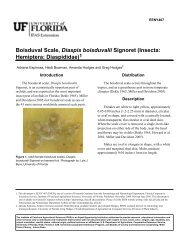Cedrus deodara 'Kashmir': 'Kashmir' Deodar Cedar1 - EDIS ...
Cedrus deodara 'Kashmir': 'Kashmir' Deodar Cedar1 - EDIS ...
Cedrus deodara 'Kashmir': 'Kashmir' Deodar Cedar1 - EDIS ...
You also want an ePaper? Increase the reach of your titles
YUMPU automatically turns print PDFs into web optimized ePapers that Google loves.
Figure 2. Range<br />
Leaf shape: needle-like (filiform)<br />
Leaf venation: parallel<br />
Leaf type and persistence: evergreen, needled evergreen<br />
Leaf blade length: less than 2 inches<br />
Leaf color: silver<br />
Fall color: no color change<br />
Fall characteristic: not showy<br />
Flower<br />
Flower color: unknown<br />
Flower characteristics: not showy<br />
Fruit<br />
Fruit shape: oval, cone<br />
Fruit length: 3 to 6 inches<br />
Fruit covering: dry or hard<br />
Fruit color: brown<br />
Fruit characteristics: does not attract wildlife; showy; fruit/<br />
leaves not a litter problem<br />
Trunk and Branches<br />
Trunk/bark/branches: branches droop; not showy; typically<br />
one trunk; thorns<br />
Pruning requirement: little required<br />
Breakage: resistant<br />
Current year twig color: green, brown<br />
Current year twig thickness: medium<br />
Wood specific gravity: unknown<br />
Culture<br />
Light requirement: full sun<br />
Soil tolerances: sand; loam; clay; acidic; slightly alkaline;<br />
well-drained<br />
Drought tolerance: high<br />
Aerosol salt tolerance: unknown<br />
Other<br />
Roots: not a problem<br />
Winter interest: no<br />
Outstanding tree: yes<br />
Ozone sensitivity: unknown<br />
Verticillium wilt susceptibility: resistant<br />
Pest resistance: resistant to pests/diseases<br />
Figure 3. Foliage<br />
Use and Management<br />
The species has been successfully used as a street or median<br />
planting with lower branches removed. It appears to tolerate<br />
compacted, poor soil but declines in areas where smog<br />
is a problem. Plant on 20-foot-centers to create a canopy of<br />
blue foliage over a small residential street. This is probably<br />
the best true cedar for the South.<br />
Transplants easily if root-pruned or from a container<br />
and protected from sweeping winds. It does well in dry,<br />
sunny spots and will tolerate high pH and clay soil. Colddamaged<br />
trees die back at the top.<br />
There are some other attractive cultivars. `Aurea’ has yellow<br />
leaves (looks ill); `Pendula’ has long, drooping leaves;<br />
`Robusta’ has stiffer twigs.<br />
Pests and Diseases<br />
No pests or diseases are of major concern. Perhaps scales,<br />
borers, deodar weevils, and bagworms. Following a cold<br />
2



